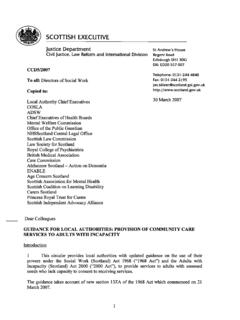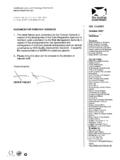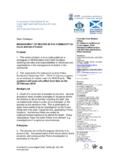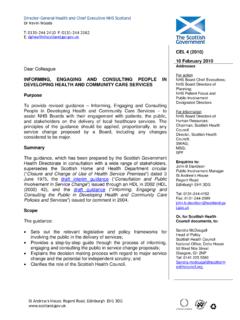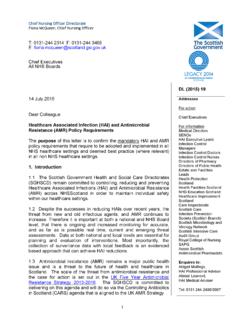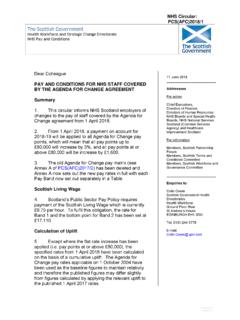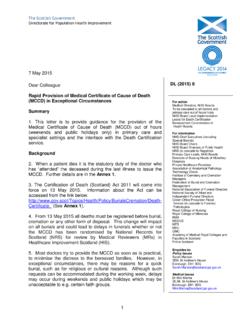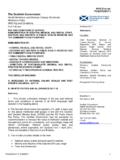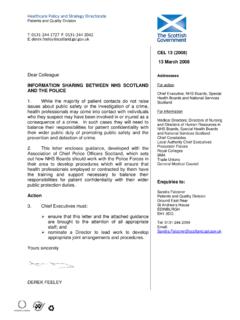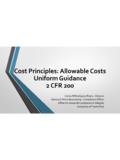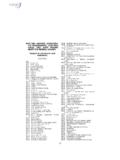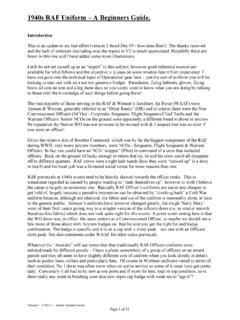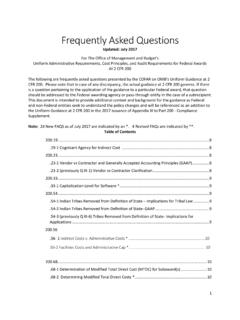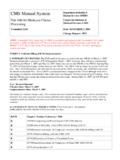Transcription of CEL 53 (2008) - NHS Scotland Dress Code
1 Health Workforce Directorate abcdefghijklmnopqrstu CEL 53 (2008) 17 December 2008 Dear Colleague NHS Scotland Dress CODE 1. This letter advises NHSS cotland employers of the launch of the Dress Code on 16 December 2008. This replaces the interim Dress Code that was issued on 7 July 2008. Background 2. An interim Dress Code was issued to Boards on 7 July 2008 carrying the caveat that detailed discussions remained ongoing and a final version would be published later in 2008. 3. The Dress Code has been further discussed and agreed by Scottish Workforce and Governance Committee and by the Scottish Government Uniform Working Group, both of which include Partnership representation. 4. The Dress Code reflects evidence-based good practice and aims to set out core principles that should inform the development of local policy.
2 5. The Dress Code sets out standards of Dress for all staff, including those who do not wear a uniform. Action 6. Boards must ensure that local policy is consistent with these guidelines. Further Information 7. Additional copies of the NHS Scotland Dress Code will be available from 17 December 2008 under publications on the Scotland s Health on the Web (SHoW) website. Yours sincerely PAUL MARTIN Chief Nursing Officer & Interim Director for Health Workforce Addresses For action Chief Executives of NHS Boards, NHS National Services Scotland , State Hospital Board for Scotland , NHS Health, NHS Quality Improvement Scotland , Scottish Ambulance Service, NHS Education for Scotland , NHS 24, and Golden Jubilee National Hospital. Directors of Human Resources, NHS Boards Medical Directors, NHS Boards Directors of Nursing, NHS Boards AHP Directors, NHS Boards PFPI Directors, NHS Boards For information Chairs of NHS Boards, NHS National Services Scotland , State Hospital Board for Scotland , NHS Health, NHS Quality Improvement Scotland , Scottish Ambulance Service, NHS Education for Scotland , NHS 24, and Golden Jubilee National Hospital.
3 Employee Directors Directors of Finance Scottish Partnership Forum members Management Steering Group members SWAG members Enquires to: Alan Milbourne Health Workforce Directorate Employee Experience Team St Andrew s House Regent Road Edinburgh EH1 3DG Tel: 0131-244 2044 Fax: 0131-244 2837 St Andrew s House, Regent Road, Edinburgh EH1 3DG abcde abc a NHSS cotland Dress Code Evidence-based Principles to inform local policies for Staff The way staff Dress sends messages to the patients they care for, and to the public about their professionalism and standards of care. These guidelines reflect evidence-based good practice and aim to set out core principles that should inform the development of local policy. The following principles are by no means exhaustive, but are intended to give some examples of the issues which Boards should consider.
4 These guidelines set out standards of Dress for all staff, including those who do not wear a uniform. In developing local uniform and workwear policies, Boards should conduct a full risk assessment to ensure that local policy is appropriate for different categories of staff and should look to support staff in complying with both the needs of the service and any religious or cultural requirements. Boards must ensure that where appropriate, their Dress code policies comply with these principles: Staff must Dress in a professional manner which is likely to inspire public confidence; o for example: in clean uniform (where uniform is a requirement), which has been laundered in accordance with the laundering guidance (to be issued separately); o when providing patient care, hair should be tied back off the collar, with nails kept short and clean.
5 O Wear clear identifiers, ( badges etc). o Where changing facilities are available, staff should change into and out of uniform at work and should change out of their uniform at the earliest opportunity at the end of their shift. It is preferable that staff should avoid undertaking activities in public, such as shopping, whilst wearing their uniform, except where such activities form an integral part of their duties. Appropriate steps must be taken to adhere to good practice and to minimise the risks of infections and cross contamination for patients and the public; o for example: staff should wear short-sleeved shirts/blouses and avoid wearing white coats or neck ties when providing patient care; o Staff should not wear false nails or hand or wrist jewellery (other than a plain wedding ring or one other plain band) when providing patient care.
6 All appropriate health and safety requirements for staff should be met o for example: Staff should not wear excessive jewellery; o Staff should wear soft-soled, closed toe shoes; o Staff should not carry pens or scissors in outside breast pockets. Staff must Dress in a manner which is sensitive to the social, cultural and diversity and equality needs of other staff, patients and carers/visitors. Scottish Government Health Directorates 16 December 2008
